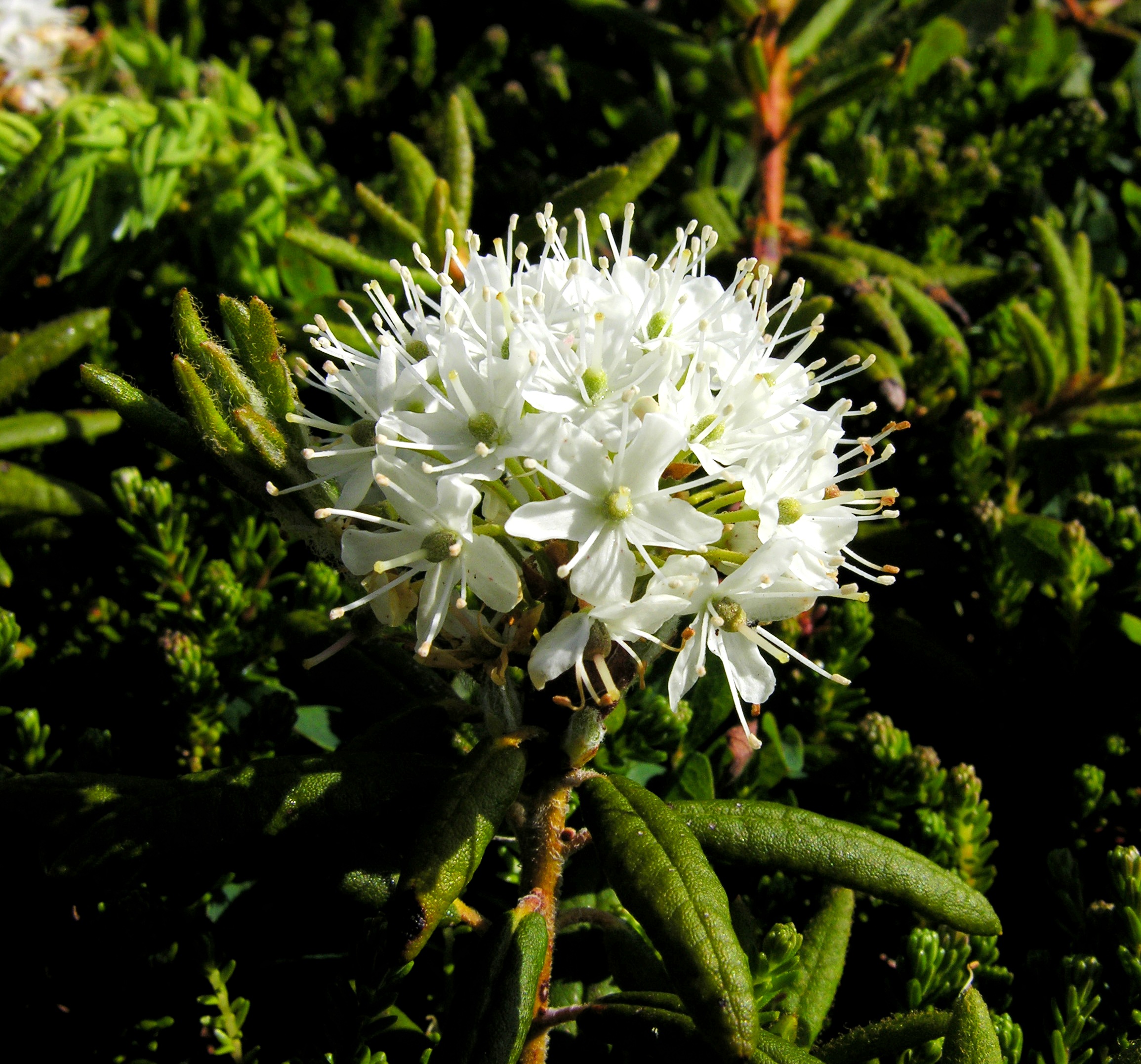 The following is an excerpt from the Edible Wild Plants workshop. Check out the full workshop for more information on commonly foraged plants in NL or use locally relevant edible wild plant guidebooks. Original sources for the information below is cited in the Workshops Kit.
The following is an excerpt from the Edible Wild Plants workshop. Check out the full workshop for more information on commonly foraged plants in NL or use locally relevant edible wild plant guidebooks. Original sources for the information below is cited in the Workshops Kit.
Name
Labrador Tea Rhododendron groenlandicum (formerly Ledum groenlandicum) and
Northern Labrador tea Rhododendron tomentosum (formerly Ledum palustre)
From the Heath family (Ericaceae)
Uses as an Edible Wild Plant

Edible part: Leaves
- Labrador tea is aptly named for its edible use and can be made into a tea served hot or iced. It is caffeine free. The flavour is floral. See brewing instructions in the recipe below.
- Fresh leaves can be chewed on while hiking
- Fresh leaves can be used as a seasoning for meats or fish.
- Use leaves fresh or dried or freeze them for year-round use.
Description

Labrador tea grows up to 1 m tall but is usually much lower. It stays green year-round. “Twigs are covered in white to rusty red hairs; older stems are reddish brown and flaky” (Boland, 2011). New leaves have white hairs all over and are green on top. As leaves mature most hairs are shed from the top leaving it dark green and leathery. The underside stays hairy and the hairs turn rusty-red. Leaves are elliptical and untoothed. “Leaves often turn reddish brown to greenish brown in winter” (Boland, 2011). The sides of the leaves roll under. Clusters of 5-petaled white flowers bloom June-August.
Northern Labrador tea (dwarf Labrador tea) is very similar to Labrador tea but is a smaller species with narrower leaves. It is found only in Labrador north of Cartwright in this province. When bruised the leaves smell really nice.

Location
Look for Labrador tea in barrens, wetlands and bogs, damp and dry woods, beside ponds, exposed areas, and in artic-alpine barrens (Northern Labrador tea).
When to Harvest
Collect leaves from early spring up until September. Only take a few leaves from each plant to avoid harming the plants.
Warnings
-

“To make tea, do not boil the leaves as this releases the harmful alkaloid andromedotoxin” (Scott, 2010). Steep the leaves instead (see recipe below).
- Sheep laurel (Kalmia angustifolia ), also known as goowiddy, is somewhat similar looking and toxic. Identify it by its hairless leaves and stems, green underside to leaves and pink flowers which are all different characteristics from Labrador tea.
Recipes
Labrador Tea (hot)
- About 30 Labrador tea leaves per teacup or mug
Boil water. Remove water from heat and let sit 1 minute. Pour water over tea leaves and let steep 5-10 minutes according to your preference for tea strength. Remove leaves from tea. Flavour with honey or lemon as desired.
Iced Blueberry Labrador Tea
- 8 cups of brewed Labrador tea
- 2 cups blueberries (fresh or thawed)
- 1/4 cup packed brown sugar
- 1 cup water
- 1 tablespoon lemon juice
In a large saucepan, bring blueberries and water to boil. Reduce heat and simmer, stirring often, until blueberries break down, about 5 minutes. Add blueberries to the brewed Labrador tea. Add brown sugar to the blueberry tea mixture; stir and then let cool to room temperature, about 30 minutes. Refrigerate until cold, about 2 hours. Strain mixture through a cheesecloth-lined sieve into a pitcher. Stir in lemon juice. Serve over ice cubes.



